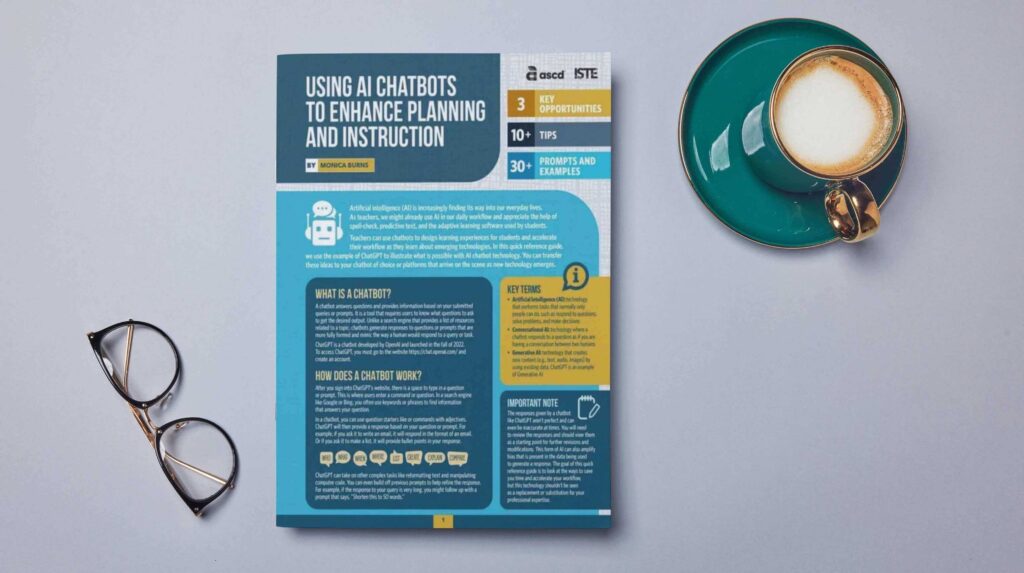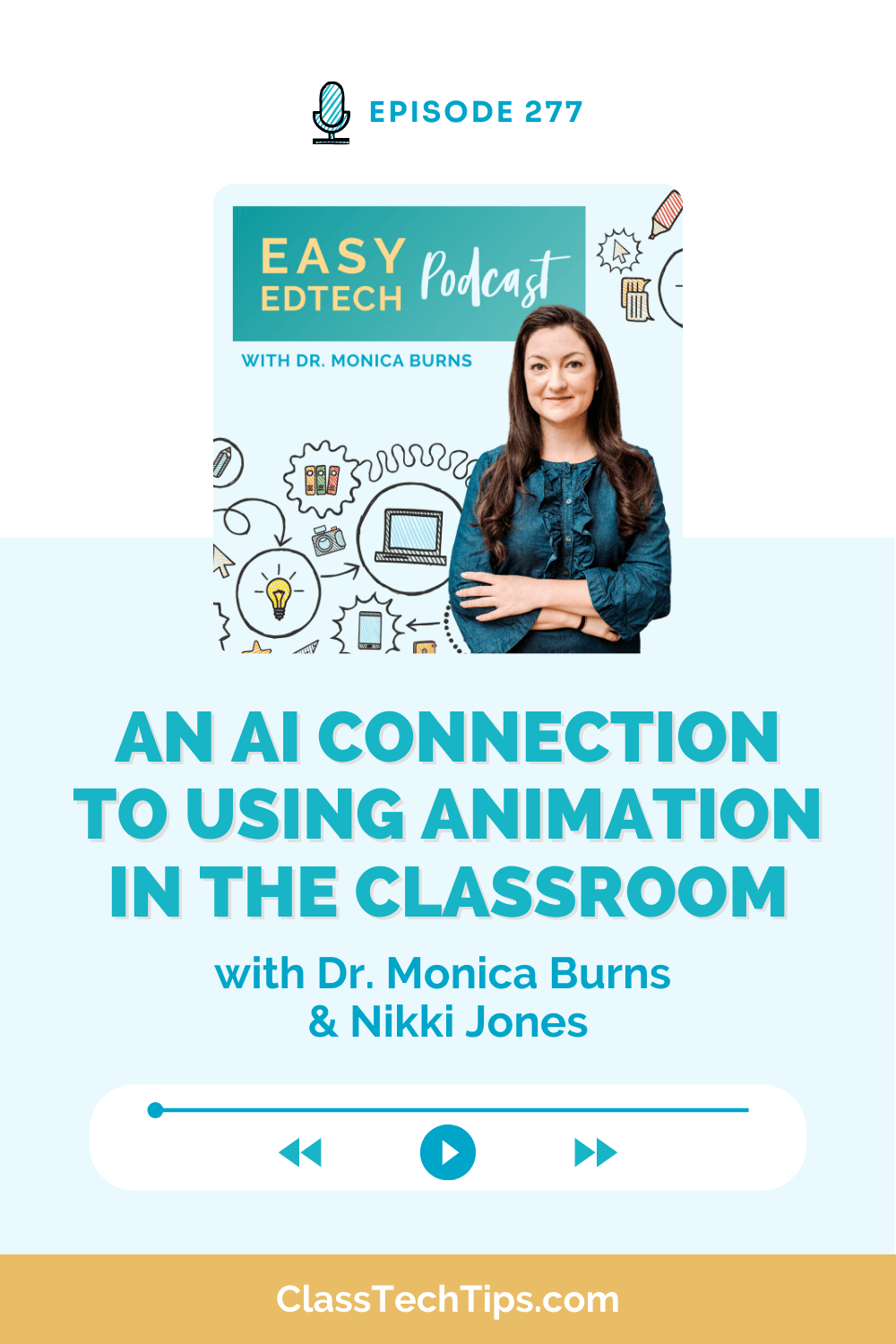Can AI chatbots really save you time this school year? My answer is yes! And I’m so committed to this idea that I’ve put together a new resource for educators all about ways to use AI chatbots to enhance planning and instruction. It includes tips for teachers who are brand new to artificial intelligence and ideas that coaches and administrators can use to support classroom practices, too.
There are plenty of ways to use AI chatbots that feel silly, but this new resource can help you use generative artificial intelligence with intention!
If you’ve stopped by the blog this year, you know that I’ve pulled together a lot of resources on artificial intelligence. This includes an ebook with ChatGPT prompts, a round-up of AI tools for teacher use, and even a membership for educators who want to stay up-to-date with AI news and trends. Today, I’m excited to share a new project all about artificial intelligence. Using AI Chatbots to Enhance Planning and Instruction, is my new Quick Reference Guide and available to order now.

Although I’ve created three other Quick Reference Guides for ASCD, this is the first one that is a joint publication between ISTE and ASCD. These two organizations have recently merged, and I’m so excited to have a new resource go live in partnership with them both. This month will be my tenth time attending ISTE’s annual conference, and I have worked with ASCD in the past for multiple projects, including my book EdTech Essentials: The Top 10 Technology Strategies for All Learning Environments.
Using AI Chatbots to Enhance Planning and Instruction
Here is the official description of my new Quick Reference Guide, Using AI Chatbots to Enhance Planning and Instruction:
An overview of how teachers can use AI chatbots like ChatGPT to design learning experiences and accelerate their workflow. Artificial intelligence is increasingly finding its way into our everyday lives, including in the classroom, and it is important for teachers to explore emerging technologies that will affect students and how they interact with digital tools.
Curriculum and educational technology expert Monica Burns offers teachers hands-on advice for how to incorporate chatbots into their planning and instruction, including the following:
- Opportunities for and challenges of using chatbots.
- Prompts and examples to support instructional planning.
- Ideas for designing assignments and assessments.
- Tips for boosting productivity so that teachers can focus on higher priority tasks.
- Ways to optimize chatbots and other AI tools.
Using AI Chatbots to Enhance Planning and Instruction also addresses teachers’ concerns about students using AI to complete essays and homework and how to craft assignments with that in mind. ChatGPT offers significant possibilities as well as obstacles for teachers, and this guide will help teachers harness its abilities to support student learning.
8.5” x 11” 3-panel foldout guide (6 pages), laminated for extra durability and 3-hole-punched for binder storage. This quick reference guide is a joint publication of ASCD and ISTE.
What is a Quick Reference Guide?

Quick Reference Guides offer concise, expert advice on a variety of key educational topics. Information is presented in a format that is both durable (laminated) and convenient (short and sweet). The design of these guides – with easy-to-use lists, charts, graphics, and instructional tips – allows educators to access and implement the information quickly. The added feature of lamination for durability and the ability to be stored in a 3-ring binder makes these guides a practical resource for any educator, whether they’re learning in a group or studying individually.
5 Ways to Use Quick Reference Guides
The versatility and design of the ASCD Quick Reference Guides provide many ways teachers can utilize them for professional learning. Here are a few possibilities.
Self-Study
Teachers can use the guides to brush up on key educational topics and discover new strategies. It also provides an opportunity to deepen their understanding of specific concepts related to their professional learning goals.
Study Groups
Educators can form study groups based on shared interests or focus areas. The Quick Reference Guides can provide a basis for their discussions and learning.
Team Meetings
The guides could be used as the focus for professional development sessions during team meetings. If your grade level team or department has similar goals, they can explore the topic together.
Mentorship
Educators or administrators could use the guides as a tool for mentoring teachers. With a QRG, you can provide a reference with advice and strategies that build upon your sessions together.
Lesson Planning
A Quick Reference Guide can be used as a resource during lesson planning. They provide educators with quick access to effective strategies and tips.
Ready to explore AI chatbots? My new Quick Reference Guide, Using AI Chatbots to Enhance Planning and Instruction, is available to order now! It’s available on Amazon, and if you’d like to order a bunch of copies for your colleagues, email me directly at hello@classtechtips.com, and I can help you get a quote directly from ASCD.







